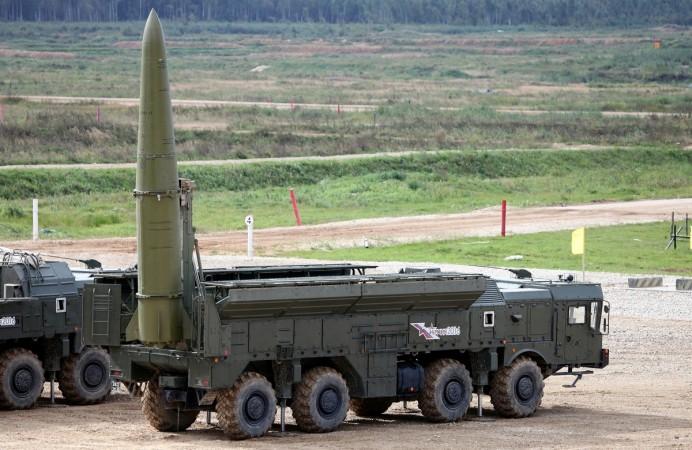
Russia's Iskander-M mobile short-range ballistic missile system, which was successfully test-fired earlier this week, would remain unchallenged until at least 2025, a Russian military official said on Wednesday.
"According to the forecasts of the developers, the creation of its analog by foreign states will not be earlier than in 2025," Russian Ground Force Commander-in-Chief Oleg Salyukov told Krasnaya Zvezda, the official newspaper of the Russian ministry of defense. He added that the rearmament of the country's missile formations with the Iskander-M systems would continue as planned.
The missile, which is considered as one the country's newest high-precision weapons, was test-launched at the Kapustin Yar firing range in southern Russia's Astrakhan region.
"Fired at a range of more than 100km, the missile is aimed at a target simulating the command post of a conventional enemy. The target was destroyed with a high degree of accuracy," the ministry reportedly said following the test-launch.
10 key things to know about the missile:
1. The Iskander-M mobile short-range ballistic missile is also known as SS-26 Stone (NATO designation).
2. The missile can hit both small-size and large-area targets at a range of up to 500 kilometers.
3. It is a supersonic, guided nuclear-capable missile, which can carry several conventional warheads weighing between 480 and 700 kilograms.
4. The Iskander-M can be used to destroy both moving and stationary targets, including other missiles, multiple launch rocket systems, long-range artillery guns, aircraft and helicopters at aerodromes, command posts and communications centers.
5. The missile system can be controlled at every stage of its flight path.
6. Immediately after the launch, the Iskander-M can perform intensive maneuvering to escape anti-ballistic missiles while approaching the target.
7. Iskander-M will replace the Soviet-made Tochka-U tactical ballistic missiles, which were referred to by NATO as SS-21 Scarab B.
8. Russia's missile and artillery forces are expected to get the Iskander-M missile systems by 2020.
9. It entered the Russian armed forces in 2006.
10. The missile was first combat-tested by Russia in 2008 during the Russo-Georgian War.













